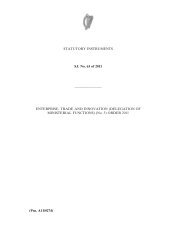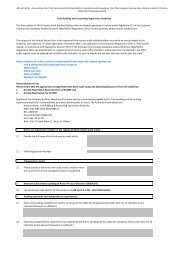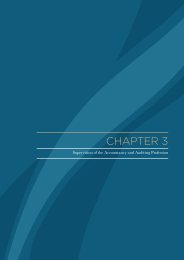Decision ref.EECS/0508-02: Step acquisitionFinancial year end: 31 December 2007 / ProspectusCategory of issue: Business CombinationStandard involved: IFRS 3Date of the decision: 30 November 2007Description of the issuer’s accounting treatmentThe issuer holds 50% of the equity in entity B, an unlisted company, the remaining 50% being held by entityC. The issuer consolidates B under the equity method as permitted by IAS 31.In September 2007, the issuer and entity C signed an agreement under which:a. Entity B will buy back its own shares from C for m.u 188, and reduce its capital by the same amount.On completion of these transactions, the issuer will hold 57.5% of entity B.b. Entity C will then exchange its remaining shares in B for newly issued shares in the issuer. The issuerwill then hold 100% of entity B.The first step in the transaction took place in November 2007. The second step will be subject to shareholderapproval in January 2008.The issuer accounted for the two steps in the arrangement as separate transactions as follows:a. As the issuer has control of B once the investee company has bought back its shares, all assets andliabilities acquired are accounted for at fair value and the residual amount of m.u. 50 is recognised asgoodwill;b. The second step represents an acquisition of a minority interest which, in accordance with theissuer’s accounting policy, is taken to equity leading to a reduction of m.u. 130.The enforcement decisionThe enforcer considered the arrangement in the context of IFRS 3, paragraph 25 which notes that when abusiness combination involves more than one exchange transaction, for example, when it is achieved instages, the cost of the combination is the aggregate cost of the individual transactions.The enforcer concluded that the exchange transactions had been properly accounted for as separate stages.Rationale for the enforcement decisionThe rationale for the enforcer’s decision was as follows:a. The first step is irreversible in that, whatever the decision taken by the shareholders in January 2008,the issuer had control of entity B once the shares owned by C were bought back in November 2007;b. The completion of the second step depends on several administrative approvals, most significantly,the approval by the issuer’s shareholders with a majority of 2/3 of the voting rights. The parties tothe agreement, the issuer and entity C, represent only 47% of the voting rights. Historically, between53% and 74% of the issuer’s shareholders are represented at general meetings. It is possible, althoughnot necessarily probable, that the second leg of the operation will not win shareholder approval.In coming to its decision, the enforcer took account of the fact that a significant shareholder in entity C doesnot participate in step 2, entity C having bought back this particular shareholder’s capital with the fundsgenerated at step 1 of the arrangement.* * *- 4 -
Decision ref.EECS/0508-03: Consolidation of special purpose entitiesFinancial year end: 31 December 2006 / Annual Financial StatementsCategory of issue: Consolidation, Special Purpose EntitiesStandard involved: SIC 12Date of the decision: 11 October 2007Description of the issuer’s accounting treatmentIn December 2003, an issuer entered into a securitization of its current trade receivables (on average, due inless than 6 months), maturing in December 2011, and with a roll-over period ending in 2010. Certain of theissuer’s subsidiaries (‘originators’) transferred their receivables to a special purpose entity (SPE) created forthis purpose, ‘X’ Receivables Funding PLC, (‘the Fund’). In some cases, intermediaries were involved in order tosatisfy the legal requirements of each jurisdiction in respect of securitization.The SPE financed the operation through the issue of 1,400 senior notes (140 million euros), subscribed bythird parties, and junior notes (7,628 thousand euros), owned by the issuer and recognized in its financialstatements as at December 31, 2006.The originators provided information about the quality and the amounts receivable calculated as prescribedby the terms of the agreement. The purchase price was calculated as the face amount of the receivables less adiscount related to the interest rate. However, the Fund actually paid an initial price of the purchase price lessa percentage that was deferred and payable only to the extent that funds were available after meeting allsenior debt obligations. The maximum amount to be paid under the agreement is 140 million euros.Each originator sells its receivables to the Fund, absolutely and without recourse against the originator in caseof non-payment by the end customer. The rolling period is available until any receivable is in default as, inaccordance with the agreement, the Fund accepts offers only if, on the proposed purchase dates, sufficientfunds are retained in its operating accountHowever, on notification by an originator to the Fund that a purchased receivable is in default, the originator(Issuer) may offer to buy back from the Fund such defaulted receivable for its outstanding face amount. Theissuer then has a call option allowing it to maintain the financing line of 140 million euros associated with thesenior notes and without disturbing the roll-over of the new receivables.The issuer did not consolidate the SPE associated with the senior notes in the financial statements as atDecember 31, 2006, as it considered that the receivables and associated credit risk were transferred by thesubsidiaries definitely and without recourse.However, in its management report (MD&A) the issuer took account of the amount securitised whendetermining total remunerated (interest bearing) financial liabilities and when performing an impairmentreview on the goodwill attaching to the parent company’s holding in its subsidiaries.The enforcement decisionBased on the additional information presented by the issuer, the enforcer concluded that the SPE should havebeen included in the consolidated financial statements for the year ended December 31 2006.Rationale for enforcement decisionThe enforcer asked the issuer to explain the apparent reporting inconsistencies in the context of SIC 12‘Consolidation – Special Purpose Entities’.Under this Interpretation, a beneficial interest in a SPE may take the form of a “debt instrument, an equityinstrument, a participation right, a residual interest or a lease”. Some beneficial interests may “simply providethe holder with a fixed or stated rate of return, while others give the holder rights or access to other futureeconomic benefits of the SPE’s activities. In most cases, the creator or sponsor (or the entity on whose behalfthe SPE was created) retains a significant beneficial interest in the SPE’s activities, even though it may ownlittle or none of the SPE’s equity.”SIC 12 paragraph 8 requires an SPE to be consolidated when the substance of its relationship with an issuer isthat the SPE is controlled by that entity, even where the arrangements are very well defined and where theywork on so-called ‘autopilot’, as the enforcer considered to be the case in this instance.The enforcer also considered that paragraph 10 of the Interpretation was also applicable in this case in that:- 5 -










